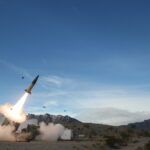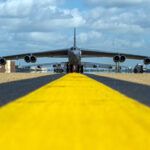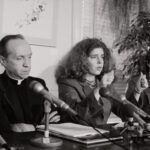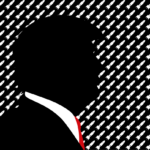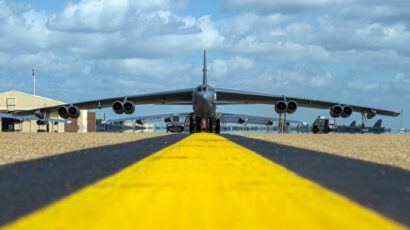Who is Kim Jong-un?
By Elisabeth Eaves | May 29, 2018
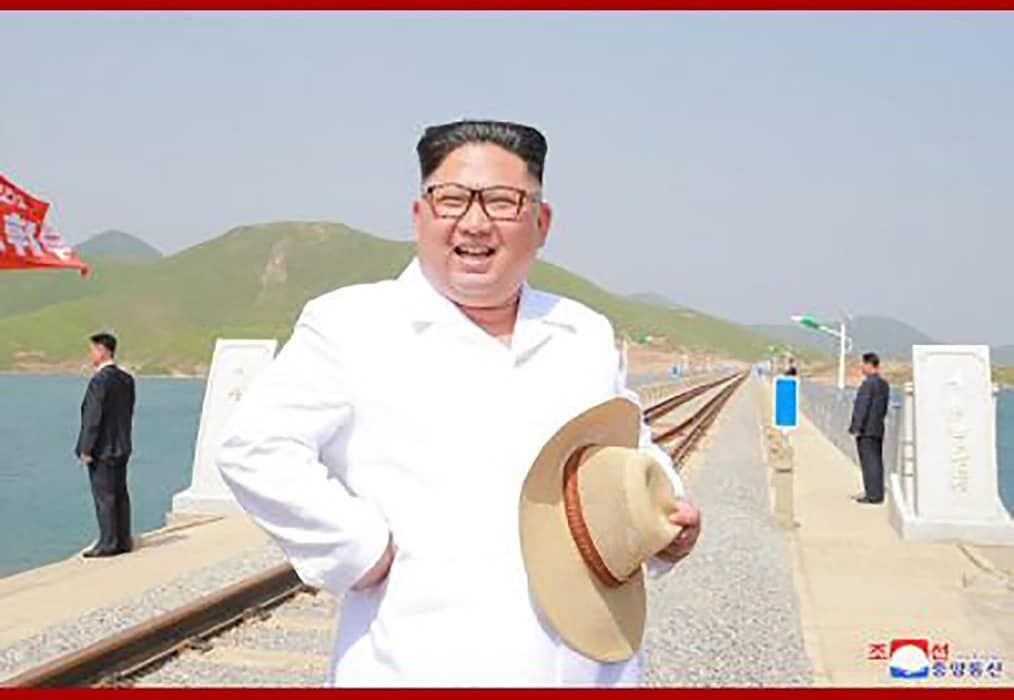 Who is Kim Jong-un?
Who is Kim Jong-un?
He taunts foreign leaders with personal insults. He offers peace overtures one day and threats the next. He commands an arsenal of nuclear weapons, creating a keen global wish to understand and predict his behavior. But since Kim Jong-un leads an isolated dictatorship, the general public doesn’t have access to geysers of biographical information spewed by a raucous democratic press. Speculation and myth have a tendency to fill in the blanks, all the harder to debunk because some verifiably true claims about the North Korean regime sound just as bizarre to foreign ears as verifiably false ones. It doesn’t help that some of the more cited sources of information on the regime include the American basketball celebrity Dennis Rodman, who has visited with Kim Jong-un on camera, and a former sushi-chef-turned-nanny in the House of Kim, Kenji Fujimoto, who charges journalists for interviews.
Pop quiz: Which of the following statements is true of Pyongyang’s three-Kim dynasty? (A) Kim Il-sung’s cult of personality inspired Romanian dictator Nicolae Ceausescu; (B) Kim Jong-il kidnapped his favorite film director; (C) Kim Jong-un had his half-brother poisoned; or (D) All of the above.
Answer: D. But it is worth trying to understand the leader beyond the oddities, someone who has armed his country significantly and grabbed the world’s attention with verbal threats. Continuing the effort to develop nuclear weapons that his grandfather began in the 1950s with Soviet help, Kim jong-un has directed his military to conduct four of North Korea’s six nuclear tests, including its largest. He has tested almost 90 ballistic missiles and ramped up his country’s cyber-warfare capabilities, an impressive feat in a country unconnected to the internet. In 2014 he ordered the attack on Sony Pictures Entertainment, destroying data and dumping confidential information, including US social security numbers, onto public file-sharing sites. Armchair pundits like to point out that he is “not crazy,” but that doesn’t mean he will take the course of action that looks most rational to foreign eyes. An effort to understand his character and motivations could go a long way.
There are, fortunately, a handful of good English-language sources on the man locked in a cycle of bluster and broken promises with US President Donald Trump. Full-fledged biographies are few. But Jung H. Pak, a historian and senior fellow at the Brookings Institution, published an insightful essay earlier this year, “The Education of Kim Jong-un,” drawing on her experience as a CIA analyst to create a profile and draw policy conclusions. The new textbook North Korea: A History (Palgrave 2018) by historian Michael J. Seth covers the years from before the country’s founding in the 1940s until 2017, including the rise of Kim Jong-un. Academic Koreanists like Andrei Lankov and B.R. Myers, both based in South Korea, offer analyses beyond the news of the day on Kim’s actions. Being about as accessible as the Wizard of Oz, the young dictator has not been as journalistically profiled as one might expect of a normal head of state. But Britain’s Sunday Telegraph ferreted out his high school classmates, and Mark Bowden consulted all the best Kimologists for Vanity Fair in 2015.
Portrait of the dictator as a young man. The vital statistic about Kim Jong-un that may matter most to the outside world is his youth: He came to power while still in his twenties and is now in his mid-thirties. (The official regime narrative says he was born in 1982, but other sources say it was 1983 or 1984.) It is probably true that he is not crazy, insofar as he does not suffer from a psychiatric condition. His physical health is not stellar—as Bowden wrote, he “seems to regard modern notions of healthy living as Western nonsense.” He is a chain smoker and avid drinker. He is obese, and both his father and grandfather died of heart attacks. But there is no reason to think his mental faculties are in doubt.
That said, his life has been extremely … weird. Other children may grow up with chauffeurs, chefs, and luxury toys, may even inherit the family enterprise. But virtually no one inherits absolute power over the lives of 25 million subjects. Lankov, a professor at Kookmin University and a director of NK News, calls North Korea a “de facto absolute monarchy.” Kim was born a prince, groomed to take the reins.
The current leader’s grandfather Kim Il-sung ruled North Korea for 46 years, and his father Kim Jong-il for 17. Kim Jong-un was the fourth of his father’s five children and the third son. A childhood photo shows him in a miniature military uniform, and lore has it he began driving cars—adapted for his stature—when he was just seven. It was also at that age that Kim Jong-un and his brother were assigned the aforementioned sushi chef as designated playmate. At 11 he started carrying a pistol. As a young person, Pak writes, “Kim had a temper, hated to lose, and loved Hollywood movies and basketball player Michael Jordan.”
During the 1990s North Korea experienced a famine, in which two to three million people died. Kim was sent to Switzerland, where he attended school for nearly four years. His classmates were told he was the son of a diplomat posted to Bern. On parents’ days, an embassy official came to the school, according to the Sunday Telegraph. A classmate told the newspaper that “he just seemed like an ordinary teenager, a fairly quiet guy who never really talked much about his home country or politics.” He was shy around girls. He did play North Korean music a lot, especially the national anthem. According to North Korea Leadership Watch, by the time he returned to Pyongyang in 2000 or 2001 he spoke German, French, and English. Back home he enrolled in Kim Il-sung Military University.
Family matters. Kim Jong-il suffered a stroke in 2008, and that same year, appears to have decided that his third son should be his designated successor, according to Seth’s North Korea: A History. In 2009, Kim Jong-un’s gradual introduction to the public began, and school children were taught a song that praised him. In 2010 he acquired several titles—vice chair of the National Defense Commission, vice chairman of the Korean Worker Party’s Central Military Commission, and, despite a lack of military experience, four-star general—and may have traveled with his father to meet Chinese leaders. He started appearing regularly in public, usually at his father’s side. State media called him “brilliant comrade.”
Kim Jong-il died in December 2011. “Within days of his succession the ‘Great Successor’ was being given the same revered status of his father, with his picture ubiquitous, his name always set in bold type and his quotations appearing in print in a special font,” Seth writes. More new official titles followed, point being that Kim Jong-un was now the living deity in a system that resembles a very large cult.
When a new dictator succeeds an old one, there tends to be a moment when Western observers collectively express hope that this one will not be as bad as the last, the young autocrat’s experience of the West often cited as an implied cause for optimism. This happened with Kim Jong-un too, with observers taking note of his school years abroad and love of American pop culture. But Kim Jong-un’s regime has shown continuity with the past since the beginning.
In style, he does do some things differently. He is a gregarious glad-hander and speech giver, harkening back to his grandfather, who some North Koreans regard with respect and nostalgia, and to whom Kim Jong-un appears to have deliberately cultivated a resemblance in dress and hairstyle. Whereas Kim Jong-il’s women didn’t exist as far as state media was concerned, Kim Jong-un’s wife Ri Sol-ju appears by his side in public. (In a good sign for the North Korean propaganda machine, Western publications have started to christen her “stylish.”)
Speaking of family, being a member of Kim’s inner circle is a little like being a mafia don or a wife of Henry the Eighth: highly privileged, but with some attendant risk of murder. Kim Jong-un orchestrated the cyber-attack on Sony because thecompany had produced a film, The Interview, that depicted his fictional assassination, but real assassination (as perpetrator or victim) is probably never far from his mind.
In 1997, during Kim Jong-il’s reign, his nephew Ri Il-nam—who had defected to South Korea, changed his name and had plastic surgery to hide his identity—was shot in his Seoul-area apartment building, probably because he had revealed embarrassing details about the regime.
Kim Jong-un’s uncle-by-marriage Jang Song-thaek was a powerful figure during his father’s rule and in the early days of his own; he was also regarded as a rival. In 2013, Kim had his uncle arrested on camera and executed a few days later.
Kim’s older half-brother Kim Jong-nam lived outside the country and at some point met with North Korean defectors who hoped he might head a government in exile, according to Dongseo University professor Myers. In 2017, two women employed by North Korea killed Kim Jong-nam in a Malaysian airport by rubbing his face with the deadly VX nerve agent. (Kim Jong-nam’s son Kim Han-sol promptly went into hiding.)
Of course, not being an actual Kim is no guarantee of safety. “Purges continued during the first five years of Kim Jong Un’s rule,” Seth writes. According to Pak, between 2011 and 2016, Kim Jong-un ordered 340 executions, “sometimes for trivial reasons such as half-hearted clapping and sleeping in a meeting.”
Nonetheless, Kim’s closest family members remain some of his most trusted advisors. His older half-sister, Kim Sul-song, is thought to play an important role in the government. And his younger sister Kim Yo-jong has become particularly prominent in recent months, serving as an important emissary—for instance to the Pyeongchang Winter Olympics, where she met with South Korean President Moon Jae-in—and a close confidante. Officially she is deputy director of the Korean Workers’ Party propaganda and agitation department; in practice she has been seen helping her brother with speeches, taking notes during his appearances, and clapping her support. Lankov, for one, is concerned. As he wrote in May,
“over the last seventy years, we have seen that virtually every ruler of the Kim family in the early years of his rule relied on a brother or sister who acted as one of the leader’s most reliable lieutenants, often charged with the most important missions.
“So far, all such royal brothers and sisters have ended badly: they could not survive the eventual emergence of the next generation successors, that is, the children of the incumbent leader (and their own nephews).”
Kim Jong-un has two or three children with Ri Sol-ju, the oldest born in 2010.
Let them watch dolphins. As for specific policies, Kim’s changes have amounted more to tweaks than overhauls. Definitely not on the agenda for reform are human rights; Human Rights Watch still characterizes North Korea as one of the most repressive countries in the world, with dissent forbidden and fear maintained through a system of prison camps where inmates are subjected to torture, hunger, and forced labor. A 2014 UN commission found that the government committed systematic and widespread abuse “including extermination, murder, enslavement, torture, imprisonment, [and] rape.” Kim has, though, clamped down on people trying to escape to China. “In fact,” writes Seth, “in many ways the authoritarian nature of the regime increased, suggested by the tightening of its borders.”
Kim Jong-un has said repeatedly that he wants to focus on both economic and military development. His two-track byungjin policy is supposed to assure that North Korea can have its nuclear weapons and prosperity too. Some of his development schemes have been quite flashy. “The vision of economic development that Kim has been promoting includes ski resorts, a riding club, skate parks, amusement parks, a new airport, and a dolphinarium,” Pak writes. “He may be deploying these signs of affluence to craft an internal narrative about North Korea’s material well-being at a time when his people are being exposed to more and more information about South Korea’s wealth.” Though North Koreans can’t access the internet, DVDs and flash drives are smuggled in, bearing soap operas and K-pop.
Beginning around 2012, Kim made a few moves towards economic reform, but these shifts were not fundamental; the North Korean economy remains largely state-run with some market-oriented elements and outside trade (especially with China), with the inevitable accompanying black market that profits corrupt officials. In any case, experts doubt how serious Kim is about putting the economy on an equal footing with military growth. “Nothing is less likely than Kim devoting himself to the economy once he’s finished arming,” Myers writes.
Kim has been very clear that he will not give up North Korea’s nuclear weapons, regardless of threats. If the proposed summit between Kim and Trump happens, there is virtually no chance Kim will walk away from it convinced to give up all of his hard-won nukes. “If confronted with the choice between denuclearization and dealing with famine and bombing, North Korea’s leaders will choose the latter,” Lankov writes. An exasperated Myers observed, “Getting asked how Kim Jong Un is now going to sell denuclearization to the North Korean public—and asked in the tone of someone who expects it to happen—reminds me how futile it is to talk to a guild with no interest in ideological matters.”
What, then, is Kim Jong-un’s ideology, or that of his regime? Myers argues persuasively that his goal is to reunite the Korean people under North Korean rule. Yes, that would mean an embattled totalitarian state taking over an economically thriving, high-tech democracy with double its population. It is probably not going to happen, but the will is there. Not every analyst places the same emphasis on unification as a driving force as Myers does, and to be sure, Kim has other wishes too. Like an organism, the regime’s goal is survival. To achieve that, it requires continued tolerance from China, and also needs North Koreans to believe that the country is under attack by outside forces, according to Seth. “Kim Jong Un sought not openness but crises to continue the siege mentality that served the regime well,” he writes.
In the effort to understand the next move from Pyongyang, it is worth keeping in mind these goals. The West can point out that Kim Jong-un is rational and not crazy. But that doesn’t mean he is going to trade away a nuclear arsenal for a shot at economic prosperity (leaving aside the fact that entering into any nuclear agreement with Washington looks a lot less rational than it did before May 8, when Trump withdrew the United States from the Iran nuclear deal.) Kim is inseparable from a regime with a 70-year history, a part and product of it, and it has an internal logic that won’t always make sense to outside eyes.
On the bright side, Pak writes, Kim has shown an “ability to recalibrate, change course, and shift tactics.” He has handled becoming a dictator with a fair amount of skill, as such things go. And the outside world still has opportunities to influence his decisions.
Together, we make the world safer.
The Bulletin elevates expert voices above the noise. But as an independent nonprofit organization, our operations depend on the support of readers like you. Help us continue to deliver quality journalism that holds leaders accountable. Your support of our work at any level is important. In return, we promise our coverage will be understandable, influential, vigilant, solution-oriented, and fair-minded. Together we can make a difference.
Keywords: Kim Jong-un, North Korea
Topics: Nuclear Risk, Nuclear Weapons, Uncategorized



